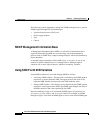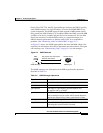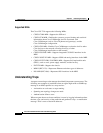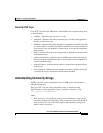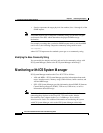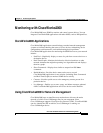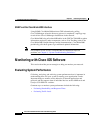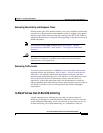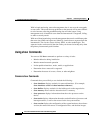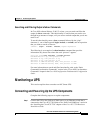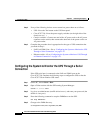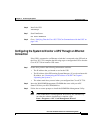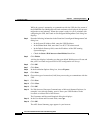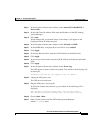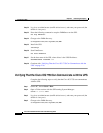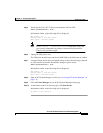
Chapter 2 Monitoring the System
Monitoring with Cisco IOS Software
2-20
Cisco ICS 7750 Administration and Troubleshooting Guide
78-10169-02 Rev. B0
With in-band monitoring, network management data is sent over the same paths
as user traffic. This means that any problems on the network will be more difficult
to solve because collecting troubleshooting data will take longer. Using
management tools is beneficial even when the internetwork is congested, failing,
or under a security attack.
With out-of-bandmonitoring, network management data travels on different paths
than user data. NMSs and agents are linked by circuits that are separate from the
internetwork. The circuits can use dial-up, ISDN, or other technologies. The
separate circuits can be used all the time or they can be used as backup only when
the primary internetwork path is broken.
Using show Commands
You can use IOS show commands to perform a variety of tasks:
• Monitor behavior during installation
• Monitor normal network operation
• Isolate problem interfaces, nodes, media, or applications
• Determine when a network is congested
• Determine the status of servers, clients, or other neighbors
Common show Commands
Commands that you are likely to use include the following:
• show interfaces displays statistics for network interfaces. (For example,
show interfaces serial and show interfaces ethernet.)
• show buffers displays statistics for the buffer pools on the target device.
• show memory shows statistics about the device’s memory.
• show processes displays information about the active processes on the
device.
• show stacks displays information about the stack utilization of processes and
interrupt routines, as well as the reason for the last system reboot.
• show version displays the configuration of the system hardware, the software
version, the names and sources of configuration files, and the boot images.



